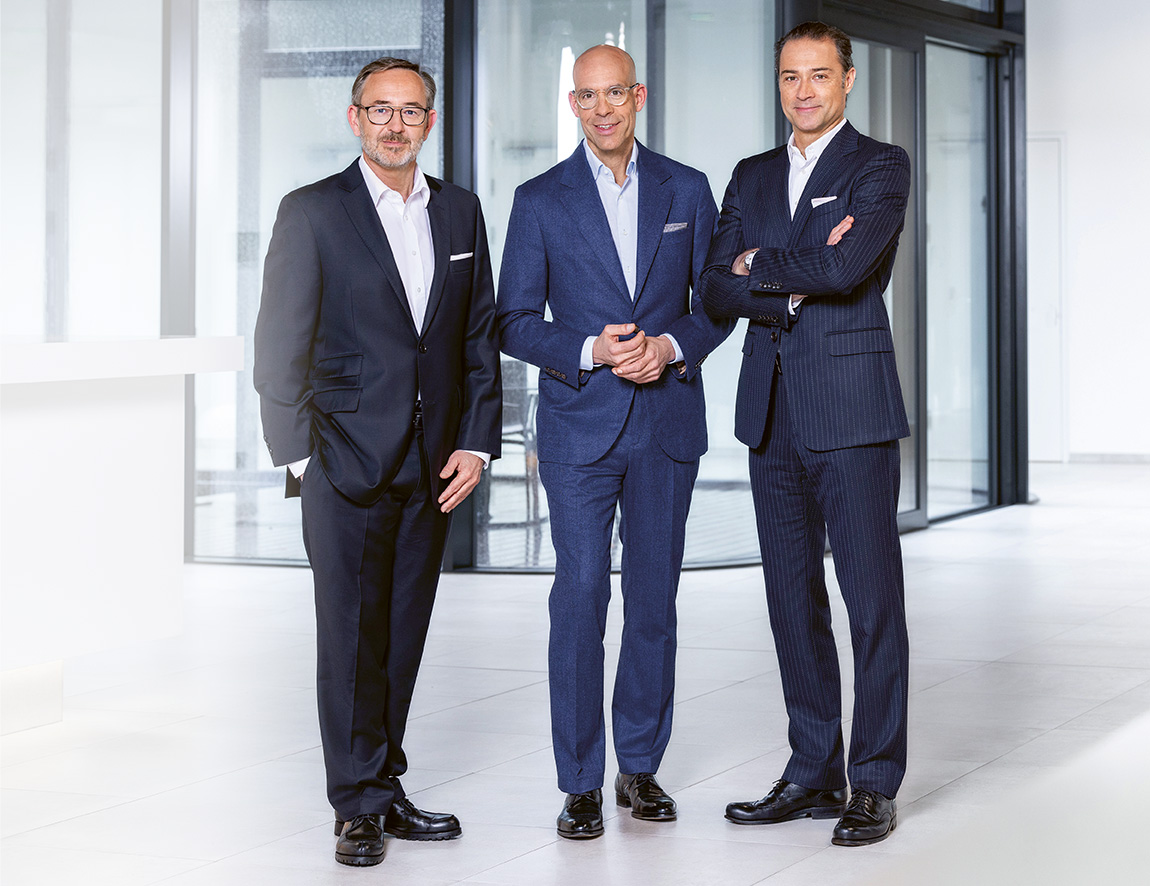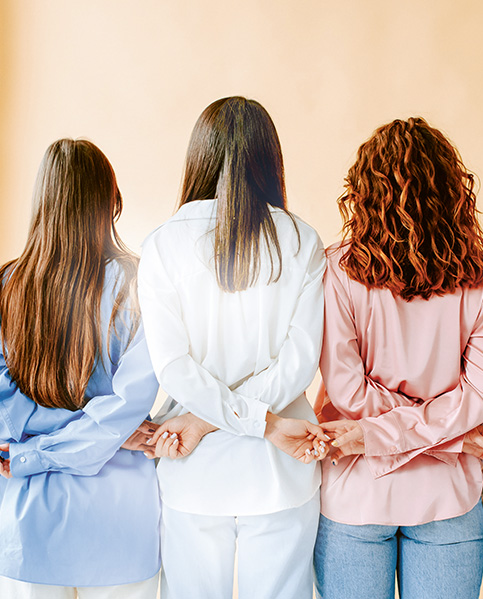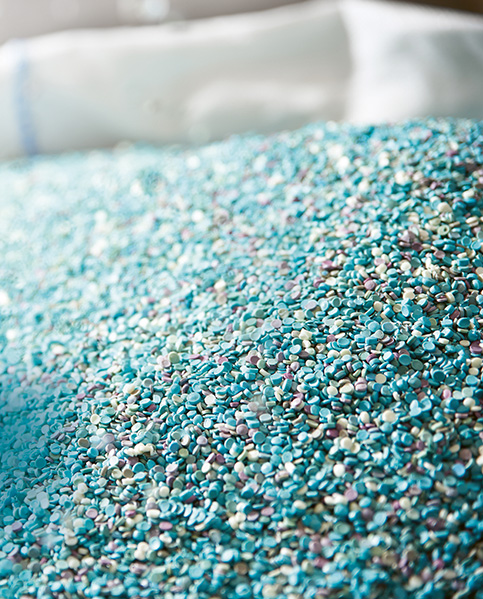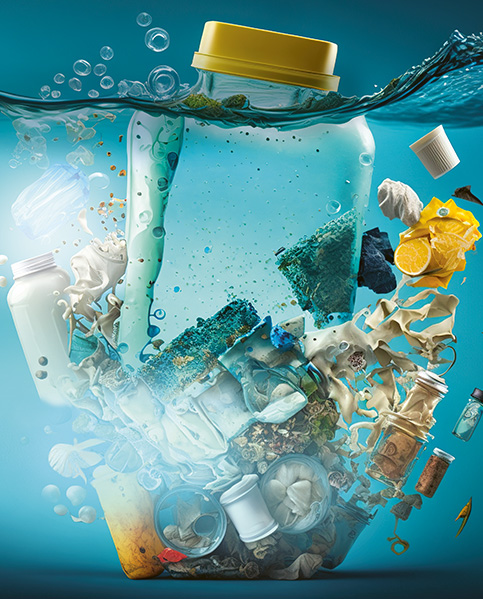Annual and Sustainability Report 2022
Now more than ever
In a world filled with uncertainty and constant change, how does Greiner navigate times of crisis?
With determination.
We are confident in the steps we’ve taken regarding key issues like decarbonization, the circular economy and making our internal structures more flexible, and will continue to implement them in the future. We believe we can proactively shape the future and stand united in our commitment. Now more than ever.
Read the entire report2022 key figures sustainability
11
11
percent
+37.5%
secondary materials
proportion of secondary materials (raw materials, consumables, supplies, and packaging) used in relation to all materials utilized
26
26
percent
-3.7%
Proportion of women in leadership positions
employees with disciplinary and/or functional responsibility for staff
58
58
percent
+61.1%
renewable electricity
share of renewable electricity as part of all electricity consumed (purchased and self-produced)
57
57
percent
+32.6%
recycled waste
share of our total waste
297
297
projects
+65.9%
Number of projects supported
all over the world
”Nothing
can stop us“
“We remain committed to our strategic transformation and becoming a sustainable, circular company. We cannot afford to sit back and wait for easier times to return.”
Read the interview in the PDF
Our impact





MATERIALS & Sourcing

For us, responsibility starts outside the company gates. We have built up a network of high-performance suppliers over decades – in Europe and around the world. Our partners are aware of the high expectations we have when it comes to our products and our collaboration. These are firmly fixed in our guidelines. We regularly discuss the standards we expect of our suppliers in our everyday business and ensure that the supply chain meets sustainable manufacturing criteria from the beginning: Now more than ever.
Our goal: We want to be a fully circular business by 2030.
Our performance
- 78 percent of our total purchasing volume goes to suppliers that have signed the Greiner Code of Conduct or a comparable Code of Conduct (2021: 63 percent).
- An initial screening of our suppliers with a purchasing volume over EUR 500 thousand at the end of 2022 showed that more than 10 percent had a valid EcoVadis rating.
- The proportion of secondary materials increased from 8 percent in 2021 to 11 percent.
- According to the definition of the Ellen MacArthur Foundation Global Commitment, 87 percent of our plastic packaging was already designed for recycling in 2021. 9.2 percent of our plastic packaging is actually recyclable.
- According to the definition of the Ellen MacArthur Foundation Global Commitment, 2.9 percent of our plastic materials used came from post-consumer recycled materials in 2021.
- We record emissions caused by upstream and downstream transportation & distribution in order to discover future optimization potential.
- We submitted our science-based targets for 2022 to the Science Based Targets initiative.
Purchasing volume covered by Greiner Code of Conduct
78
78
percent
+23.8%

People & Society

Our most important resource is imagination. And that is what we use. By implementing ideas and innovations, people permanently push the boundaries of what is possible. In our Group, too, we look to see where we can improve every day and where we can open doors to a sustainable future. In order to succeed in these endeavors, we focus on creating an atmosphere where our employees can fulfill their potential and feel at ease. We provide a sense of security, promote diversity, and create space for ideas. We want everyone at Greiner to be able to help shape the future: Now more than ever.
Our goal: We want all our employees to be prepared for the challenges of the future by 2030.
Our performance
- 58 percent of employees received a performance review in 2022 (2021: 66 percent).
- The frequency of major occupational accidents has decreased by 26 percent in comparison with 2018.
- 15 of 51 production sites achieved the targets set in the health-related measures in 2022 (2021: 16 of 49 sites).
- In 2022, the proportion of women in leadership positions was 26 percent (2021: 27 percent).
- In 2022, the proportion of women in all work areas outside production was 44 percent (2021: 43 percent).
- The number of training hours per employee averaged 15 hours in 2022 (2021: 11).
- In 2022, we supported a total of 297 projects around the whole world (2021: 179).
Frequency of major accidents
9.41
9.41
per one million hours worked
-11.8%

Production & Operations

Often, less is more – and can do us all a lot of good. As a family company, we believe that financial success at the expense of people and nature will sooner or later throw a company off balance. That is why we keep a close eye on all dimensions in our value chain – including the use of our resources. We use energy and water conscientiously, and minimize emissions and waste as much as possible. Balance and biodiversity are now under threat more than ever before. That is why we feel obliged to act: Now more than ever.
Our goal: We want to be a climate neutral company by 2030.
Our performance
- In 2022, the proportion of renewable electricity was 57.9 percent (2021: 35.7 percent).
- We generate 0.19 percent of our electricity consumption ourselves from renewable sources (2021: 0.13 percent).
- Our energy efficiency has improved by 32 percent against 2018.
- Specific emissions have fallen by 65 percent since 2018.
- 1,744 tons of our total waste went to landfills in Europe in 2022 (2021: 1,747 tons).
- 3,340 tons of our total waste went to landfills worldwide (2021: 2,986 tons).
- 56.9 percent of our total waste was recycled in 2022 (2021: 43.2 percent).
- Water savings potential was identified at four of six sites in water-stressed areas in 2022.
- We will develop a Water Policy in 2023.
Specific CO2 emissions (Scope 1 & 2)
39
39
kg CO2e per thousand EUR in sales revenue
-37%

Use Phase & End-of-life

The world is a place of diversity and alternatives. In contrast, there is no alternative to creating a circular economy. Because we all know: natural resources are finite and therefore infinitely precious. Consumers are aware of this, too. They have clear expectations of companies. At the same time, clear guidelines are being set by politicians so that everyone in society remains focused on the tasks ahead. We have the ideal prerequisites to transition from our previously linear economy to a circular economy. We will be putting everything we have into achieving this: Now more than ever.
Our goal: We want to be a fully circular business by 2030.
Our performance
- According to the definition of the Ellen MacArthur Foundation, 87 percent of our plastic packaging is already designed for recycling. Currently 9.2 percent of our plastic packaging is actually recyclable.
Do you want to know more?
